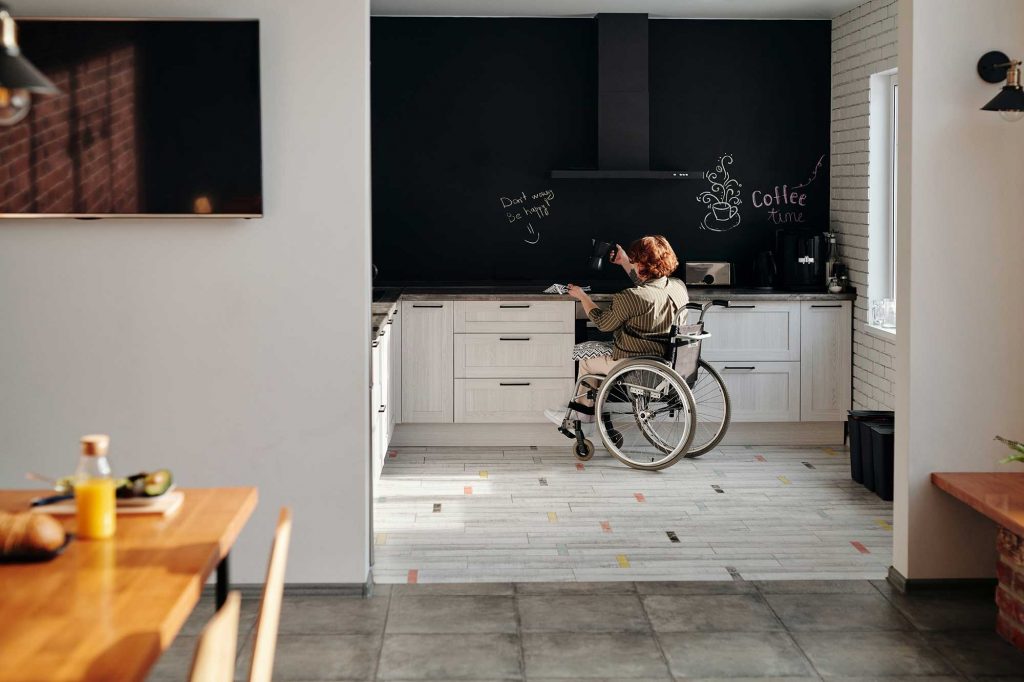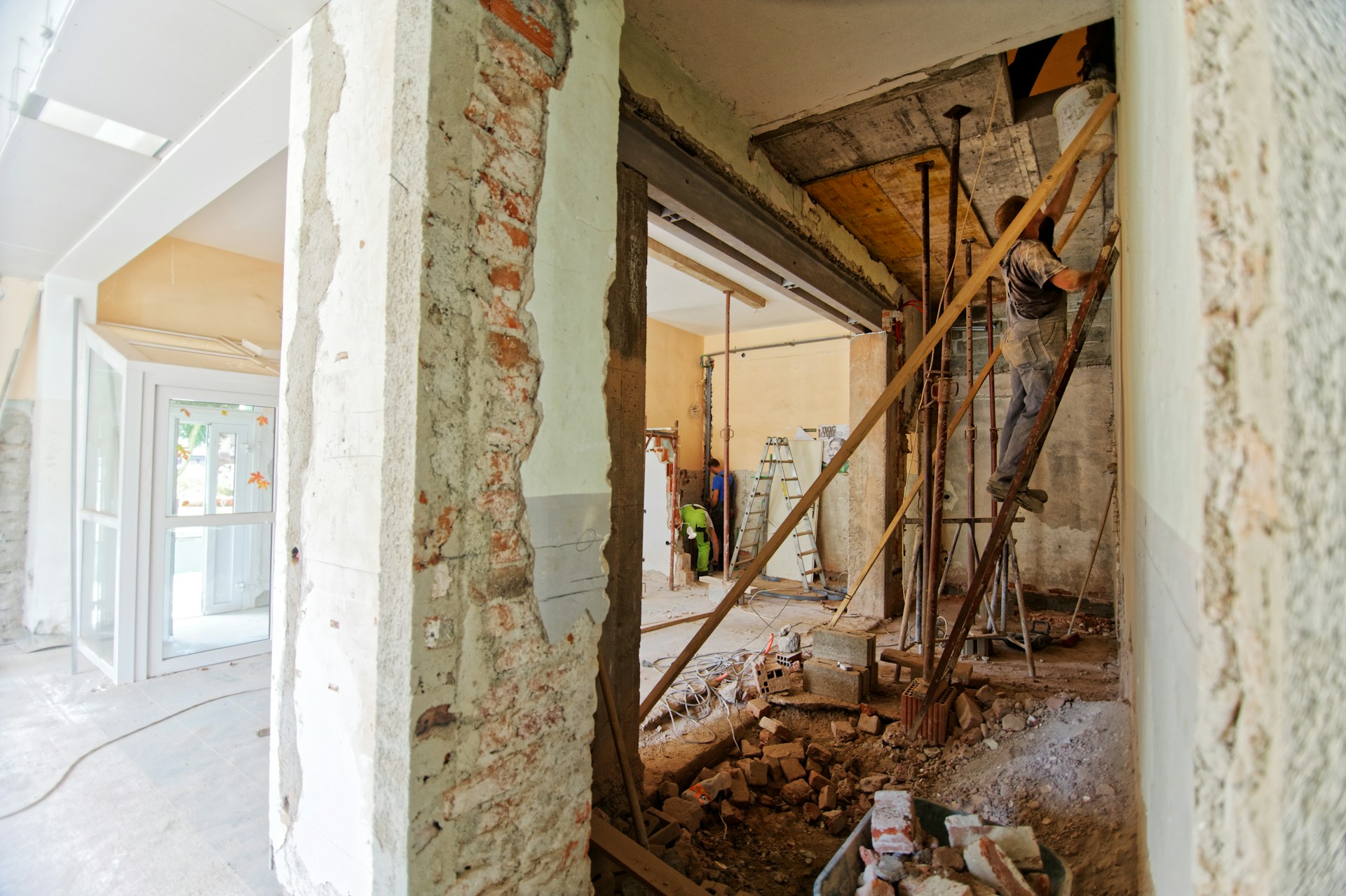
Home Adaptation Services by Bluebell NW
What are Home Adaptations?
Home adaptations are changes made to your household to make it safer and easier to live in. Older and disabled people often require home adaptations to ensure they remain safe, mobile, and independent in their homes.
There are various types of home adaptations available, any of which may be necessary to maintain a happy and healthy life at home.
What are the Benefits of Home Adaptions?
From preventing falls to improving general well-being, home adaptations offer many benefits for people that need them. By making changes to their home, individuals maintain higher levels of independence, safety, and comfort.
While often expensive, home adaptations are often cost-effective over the long term.
For example, if an elderly person is less mobile, making home adaptations is usually much cheaper compared to moving to a different home or into an assisted living facility.
Moreover, people are allowed to maintain more autonomy and dignity over their home life, making home adaptations a great option for countless people.
Plus, home adaptations are very flexible, being tailored to the needs of the individual. As a result, not all home adaptations are expensive.
Plus, it’s possible to receive financial assistance to cover some or all the costs of these adaptations.
Common Types of Home Adaptations
Bathroom
Bathrooms are one of the most adapted rooms in a home. Being able to wash yourself safely and independently is important for any individual, yet often challenging for elderly or disabled people.
When living with disabilities or mobility issues, bathrooms pose various safety risks that could result in serious injury. For example, slippery surfaces may cause someone to fall and hurt themselves, making everyday things like getting showering and bathing much riskier.
There are various bathroom adaptations available, both small and large. For instance, small and inexpensive bathroom adaptations include adding grab rails around a bath and shower for easier access.
Major adaptations are often needed for more severe disabilities and mobility issues.
These adaptations may include installing any of the following:
- Walk-in shower
- Shallow bath
- Bath lift or hoist
- Built-in bath or shower seat
- Downstair bathroom
- Converting to a wet room
- Non-Slip flooring
Kitchen
Much like the bathroom, the kitchen poses various health and safety risks for people living with mobility issues or disabilities.
For example, wheelchair users can’t safely reach worktops and cupboards, making it difficult to prepare food and store kitchen utensils.
The kitchen plays a vital role in day-to-day life for everyone, yet they are not usually designed for people with mobility or accessibility issues.
As a result, countless people struggle with daily tasks in the kitchen like cooking and cleaning.
Thankfully, kitchen adaptations are widely available, helping to improve the safety and usability of this essential household room.
Various kitchen adaptations are available including:
- Lowering Cupboards.
- Lowering Worktops.
- Installing Separate Hobs and Ovens.
- Creating Free space Below Work Surfaces.
- Widening Floor Spaces.
General Home Adaptations
While the kitchen and bathroom are two main rooms that require home adaptations, there are general changes that can be made throughout the household.
Widening Doorways
Widening doorways is a common home adaptation, providing greater accessibility for wheelchair users. Older properties are often built with narrower doorways, making it difficult to navigate when using wheelchairs or mobility aids.
Therefore, widening doorways ensure that people with mobility issues can easily and independently move throughout their homes.
Ramps
Ramps are inexpensive home adaptations that offer greater accessibility for people with mobility issues. Available indoors and outdoors, ramps can be permanent or portable, typically installed at the front and back doors.
Grab Rails
Like ramps, grab rails offer greater accessibility for individuals facing mobility issues. Grab rails are cheap and easy to install and can be placed throughout the home to prevent slips and falls.
Common locations for grab rails include bathrooms, bedrooms, living rooms, and staircases.
Stairlift
Living in a multi-story house with mobility issues is very challenging. A stair lift allows people to travel safely upstairs without the risk of tripping and falling. While an expensive home adaptation, it allows people to maintain independence in their homes – it’s also a cheaper alternative to moving to a single-storey home.
How to Get a Home Adaptation Assessment
A home assessment is available for people that are struggling with day-to-day tasks around their home. To arrange a home assessment, you can contact your council directly or apply for a home assessment online.
How Does a Home Adaptation Assessment Work
A home adaptation assessment involves a visit from an occupational therapist. The therapist will discuss the issues, taking a walkthrough of the home to determine what the individual is struggling with.
The home occupier must be present for the assessment, answering honestly about their mobility issues in their home.
If you’re receiving a home assessment, don’t miss any details about your challenges, even seemingly minor issues like reaching for a cupboard or getting off the sofa.
An assessment will last a least an hour, possibly longer
Financial Assistance for Home Adaptations
Home adaptations are often expensive but it’s possible to apply for financial assistance if you are eligible for the changes.
Minor home adaptations are covered by your local council. Each minor adaptation under £1,000 is paid for by your council.
Minor home adaptations include grab rails and steps.
You might be eligible for a government grant to cover the cost of more expensive adaptations. The Disabled Facilities Grant is a grant from your local council. It’s available for disabled people that may require expensive adaptations such as widening doors, installing stairlifts, adapting bathrooms etc.
The amount received from the Disabled Facilities Grant depends on your income, savings, and where you live (e.g., England, Wales, or Northern Ireland). The grant may be up to £30,000, so is well worth applying for!
Other financial assistance options for home adaptations include charities like Independence at Home.
Like the government grant, you need to apply for this grant to determine eligibility and the amount you receive.



